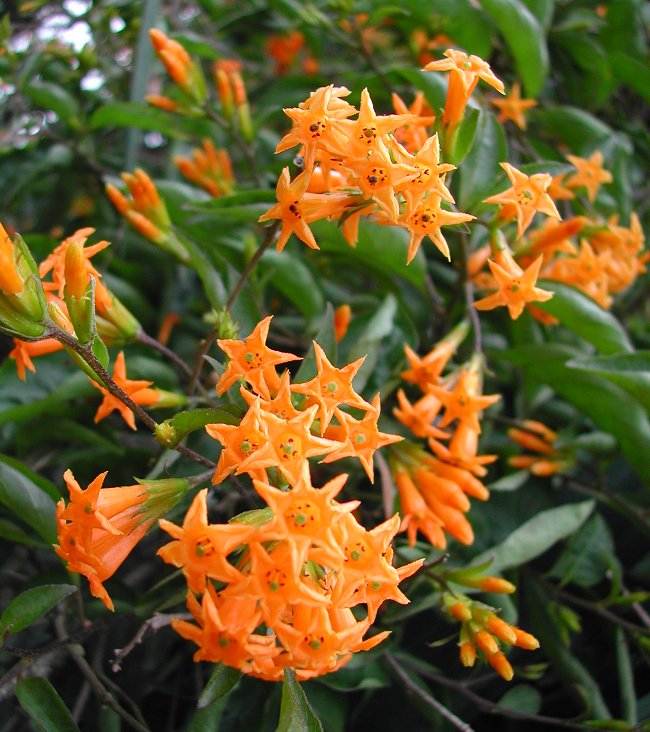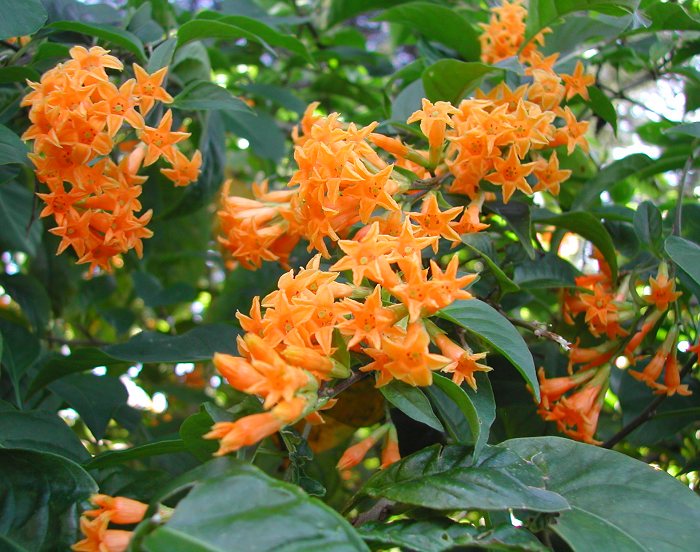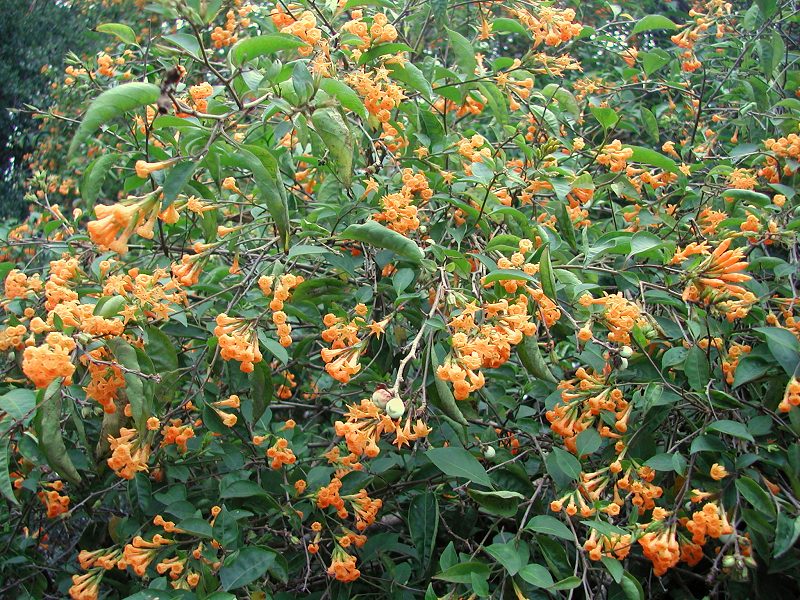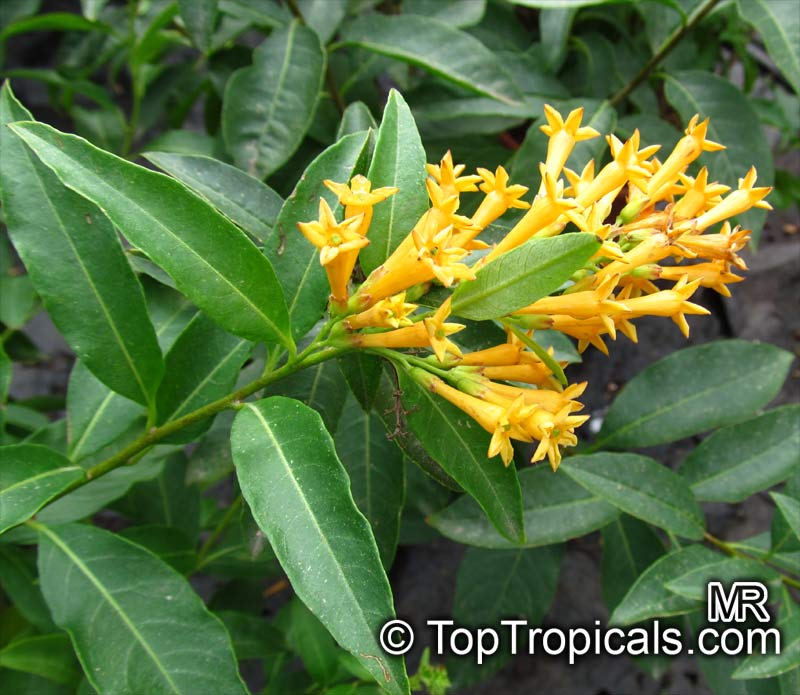Cestrum aurantiacum
Cestrum aurantiacum
Cestrum aurantiacum is a perennial plant of the genus of shrubs Hammer ( Cestrum ).
Description
Cestrum aurantiacum is a 1.5 to 6.5 m tall shrub or occasionally up to 8.5 m tall tree. The branches are hairy glabrous or sparsely tomentose. The leaves are ovate to elliptic, 7-17 cm long and 2.5 to 5.5 cm wide. Both leaf pages are smooth, the tip is tapered or short tapered, the base is tapered to blunt or occasionally short rejuvenating. The petioles are 1-3 cm long and hairless.
The terminal or axillary, racemose or doldigen inflorescences consist of a few to a few flowers. The inflorescence axis is finely hairy or glabrous, the bracts linear, and later falling away. The flowers are sessile, nearly sessile or stand up to 1.5 mm long pedicles. The calyx is tubular, 5 to 6.5 ( rarely up to 9 ) mm long and up to (0.7) 1-2 (3 ) mm long, ciliate sepals glabrous. These are pfriemförmig and long - mucronate or rounded and long - mucronate and run at the calyx tube than five nerves down further. The orange or rarely yellow crown has a 17.5 to 20 mm long corolla tube, the corolla lobes are 3 to 3.5 (5.5 ) mm long, ovate or lanceolate. At the edge they are papillose - hairy outside. The stamens are 4 to 6.5 mm long, bent and swollen knee- shaped, channel-like or almost like appendage. The base and the vascular bundles of the stamens are hairy. The stylus is 16.5 to 18.5 mm long.
Fruit as they form white, 8 to 12 mm long berries seven to nine seeds that are about 3 to 5 mm long.
Occurrences and locations
This type is used in an area that extends from southern Mexico to Nicaragua. There they are found in damp thickets or forests, often in pine - oak forests at altitudes of 1000-2600 m.
Use
In Huehuetenango (Guatemala), the crushed leaves are to be used together with soap and cold water to remove stains from the clothes.
Botanical history
The first description of this kind was made in 1844 by John Lindley, who described it on the basis of a drawn in England plant. The seeds were sent to him by George Ure Skinner, who is said to have collected them in Chimalapa (Guatemala).
Swell
- Johnnie L. Gentry Jr. and Paul Standley: Flora of Guatemala. Solanaceae, Fieldiana: Botany, Volume 24, Part X, number 1 and 2 Field Museum of Natural History, 1974.










